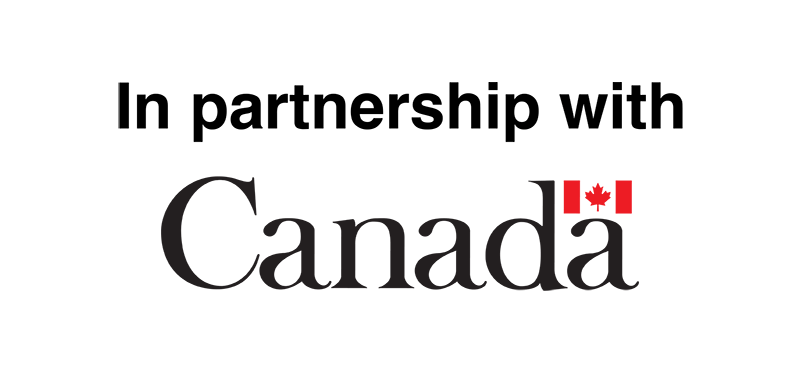Article
Elements of Inclusive, Anti-Oppressive Governance
Written by Tanya Hannah Rumble
There are a number of elements of good governance in the non-profit sector, they include structure, which involves leadership and recruitment; internal processes, which involves accountability and stewardship, culture and board meetings; and finally, responsibilities, which involves role clarity, performance measures, education and development, strategic planning, risk management, and succession planning. It is important to consider how each of these elements of good governance can also be a tool for ensuring that your Board embraces inclusive and anti-oppressive governance.
Structure
The structure of a board plays an essential role in defining the policies of your organization, setting expectations around relationships and the roles of the board and board committees. Ensuring inclusive and anti-oppressive practices are built into the structure of your Board creates a strong foundation that sets the stage for following policies, expectations, and processes.
- Leadership
- All committees and the Board should have an accurate and up to date Terms of Reference (ToR) that has been reviewed for accessible, plain language, and anti-oppressive language. For example, removing the use of gender-specific language such as Chairman.
- Consider opportunities for how the beneficiaries of your organization are included on the Board and Board committees. Typically, there is a maximum number of Board Director positions, so consider how you can find opportunities through committees and working groups to have greater inclusion and decision-making influence of community in your organization’s leadership.
- Recruitment
- In your recruitment process are you clear on the role of the Board Directors and the type of Board structure (governance or operations board)? Are there any other unwritten expectations that should in fact be codified and written? For example, do you have an unspoken expectation that all Board Directors make a financial donation, or assist with fundraising? If that is the case, ensure that it is clear and consider the language of ‘personally significant gifts’ as each person’s capacity is different and should be private.
- Consider any potential barriers to participation on the Board and actively dismantle these. For example, do you have Board meetings at a set day/time each month? Evening time slots may create barriers for some, and they will automatically opt out of applying.
- If you are prioritizing folks who have lived experience and/or intersectional identities that have not typically been represented on your Board, then specify this in lieu of saying ‘diverse candidates'. Provide transparent information on the journey your organization is on as it pertains to anti-racism, anti-oppression, reconciliation and decolonization: What progress have you made? Do you have an anti-oppression policy? Do you have a strategic plan for reconciliation and decolonization, and/or equity, diversity and inclusion (EDI)? Make this information available to prospective candidates.
Internal Processes
How the Board works is just as important as what the work is. It is essential that internal processes around how the leadership of the board manifests are laid out clearly and reflect the relational values of your organization.
- Culture
- When you are recruiting for Board Directors and/or assessing the performance of the current Board Directors, does the term ‘fit’ get used? If so, how is it qualified? Fit can be an all-encompassing term that allows us to opt folks out of a recruitment process or join our organization based on very subjective criteria, which is often impacted by our own implicit bias. Ensure there is specificity around values and qualifications to avoid bias impacting your building of culture — which will naturally evolve as you bring in new and divergent perspectives to your Board.
- Board Meetings
- Many Board decision-making processes and even preparation for Board meetings do not center inclusion, particularly when we consider neurodiversity and learning styles. Distribute preparatory information for Board meetings in a timely fashion and ensure that the content itself has been reviewed for readability, accessibility and plain language.
- Further, if there is significant discussion prior to a decision being made, and new information has surfaced, consider if the decision can be deferred to another meeting or facilitated remotely to ensure folks have the opportunity to reflect before rendering their decision.
- Accountability and Stewardship
- As a Board, do you have a clear process and expectations regarding how accusations related to hate, oppression and racism are dealt with? In practice, does the relationship you have had with the individual, their tenure, their involvement as a donor and/or Board Director or long-term volunteer, etc. impact how the accusation is handled?
Responsibilities
The following are a number of responsibilities that can really be seen as opportunities for the board to be self-reflexive and wholly integrate inclusive and anti-oppressive principles and values into its functions amongst its members and as part of the broader organization.
- Role Clarity
- Oftentimes, the majority of what is written into the role description for a Board Director is either unrealistic or unnecessary. Review your role descriptions and consider how many of your current Board Directors would fulfill all the criteria you have listed and strip away the elements that you, as an organization, can easily train new Board Directors on.
- Build in a comprehensive orientation program into your Board recruitment process and ensure that ALL Board Directors participate. Further, if you are genuinely committed to bringing a diversity of identities and perspectives to your Board, you need to make space for potentially shifting current practices in response to that diversity. As such, all Board Directors benefit from most of what happens in orientation and their participation will help build a shared understanding of the role and the relationships between Board Directors. This can also assist in ensuring a balance of power between those who have served on the Board for a long time and those who are new.
- Performance Measures
- Is EDI the work of a committee or the work of the whole board? If it is the former, consider why that makes it seem like it is relevant to those who are on the committee and/or those who have marginalized identities. EDI is the responsibility of the entire organization. Thus, how is it being reflected in the annual Board survey and other conversations about organizational performance?
- Education and Development
- Ensure resources are allocated on an annual basis for the entire Board and committee volunteers for training related to anti-oppression, decolonization and reconciliation. Also, create space at each agenda for folks to share any learnings or unlearnings they have had in these areas so that the discussion and learning is ongoing.
- For all Board and staff involved in the recruitment of Board Directors, there should be specific anti-oppression and bias training to ensure the process is inclusive and equitable.
- Strategic Planning
- If reconciliation, decolonization and EDI are important to your organization, then they should be reflected in the strategic plan for the organization.
- Further, the process of strategic planning should account for power dynamics and be intentionally inclusive of all the perspectives of groups connected to your organization (notably: beneficiaries).
- Succession Planning
- The process of selecting your Board Chair and/or other Executive Committee roles (if applicable) should be transparent and open — many organizations purport to have an open process, but, in reality, folks are often pre-selected and encouraged, while others are not.
- Ensure you have clear and staggered term limits to ensure continuity on your Board, while also allowing for the recruitment of new Board Directors to foster innovation, equity and inclusion.
Much of this work outlined here relates to setting expectations while also centering relationships. You will find that once you begin intentionally using these governance tools and frameworks, they will become interwoven and inform each other, evolving as your organization shifts and changes over time.
Additional Resources
For more information visit:
This article was developed as part of CICan’s 50 – 30 Challenge Ecosystem partnership with ISED. Interested in learning more? We encourage you to visit our website for resources, personalized one-on-one support and training to support your organization on their EDI journey. Keep up to date by signing up for our mailing list.




